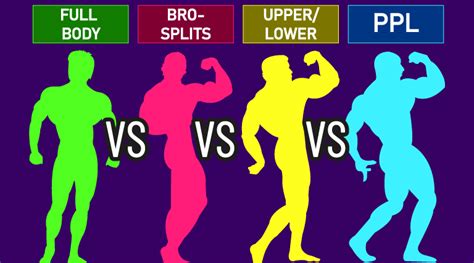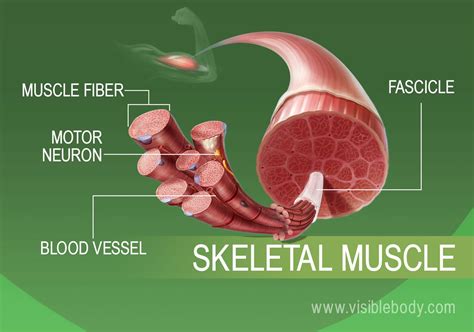Optimize workout split for maximum hypertrophy and power gains efficiently?

The Dual Pursuit: Hypertrophy and Power
Many lifters aim for the best of both worlds: the impressive muscle size of hypertrophy and the explosive strength of power. While these goals often seem to demand different training approaches, it is entirely possible to optimize a workout split that efficiently targets both, leading to comprehensive physical development. The key lies in understanding the physiological demands of each and strategically integrating them into a cohesive training plan.
Hypertrophy training primarily focuses on increasing muscle size through mechanical tension, metabolic stress, and muscle damage, typically involving moderate loads, higher repetitions, and higher volume. Power training, on the other hand, prioritizes the ability to generate maximum force rapidly, often employing heavy loads, lower repetitions, and explosive movements to enhance neurological efficiency and recruit fast-twitch muscle fibers.

Fundamental Principles for a Hybrid Approach
To effectively blend hypertrophy and power, several core training principles must be considered and manipulated:
- Frequency: How often you train a muscle group. Higher frequency (2-3 times per week per muscle group) can be beneficial for both, allowing for more exposure to different rep ranges and intensities.
- Volume: The total amount of work performed (sets x reps x weight). Volume needs to be sufficient for hypertrophy but manageable to allow for power development without excessive fatigue.
- Intensity: The weight lifted relative to your one-repetition maximum (1RM). Power work demands higher intensities (typically 70-90%+ 1RM), while hypertrophy can range from 60-85% 1RM.
- Exercise Selection: Compound movements (squats, deadlifts, bench press, overhead press, rows) are foundational for both power and hypertrophy. Isolation exercises are primarily for hypertrophy.
- Periodization: Systematically varying training variables over time to prevent plateaus and optimize adaptations. This can involve alternating blocks or integrating different focuses within the same week.
Common Workout Splits and Their Adaptations
Different workout splits offer unique advantages for integrating power and hypertrophy:
- Full Body Split: Training all major muscle groups in each session. Great for beginners or those seeking high frequency. Can incorporate heavy compound movements for power followed by lighter hypertrophy work.
- Upper/Lower Split: Divides the body into upper and lower days. Allows for higher volume per session for each muscle group while still maintaining decent frequency. Ideal for alternating power and hypertrophy focused days (e.g., Upper Power, Lower Power, Upper Hypertrophy, Lower Hypertrophy).
- Push/Pull/Legs (PPL) Split: Organizes workouts by movement patterns. This split is excellent for hitting muscle groups multiple times a week with sufficient recovery, making it suitable for a hybrid approach by varying intensity and rep ranges on different PPL days.
- Body Part Split: Devoting an entire session to one or two muscle groups. Traditionally hypertrophy-focused, but can incorporate heavy compound lifts at the beginning of a session for power. Frequency is typically lower.

Crafting an Efficient Hybrid Split
For optimal efficiency, consider these strategies when designing your split:
- Prioritize Power: Perform your heaviest, most explosive power exercises (e.g., 1-5 reps of squats, deadlifts, presses) at the beginning of your workout when you are freshest and have the most neurological energy.
- Follow with Hypertrophy: After your power work, transition into hypertrophy-focused sets (6-12+ reps) with moderate loads and higher volume. This ensures you get quality strength work without fatiguing your muscles for size gains.
- Allocate Days Strategically: Instead of simply mixing, consider dedicating certain days or sessions more towards one goal, even within a single week. For instance, an upper/lower split might have two upper body days: one heavier, lower rep upper body day (power/strength focus) and one higher volume, moderate rep upper body day (hypertrophy focus).
A highly efficient and popular hybrid approach is a 4-day Upper/Lower split:
- Day 1: Upper Body (Power Focus) – Heavy compound presses/pulls (e.g., bench press, overhead press, weighted pull-ups, barbell rows) in lower rep ranges.
- Day 2: Lower Body (Power Focus) – Heavy squats, deadlifts, lunges in lower rep ranges.
- Day 3: Rest/Active Recovery
- Day 4: Upper Body (Hypertrophy Focus) – Moderate load presses/pulls with higher volume, incorporating more isolation exercises.
- Day 5: Lower Body (Hypertrophy Focus) – Moderate load squats/leg presses/extensions/curls with higher volume.
- Day 6 & 7: Rest

Optimizing for Efficiency and Recovery
Efficiency isn’t just about the split; it’s also about supporting factors:
- Progressive Overload: Continuously challenge your muscles by increasing weight, reps, sets, or decreasing rest times. This is non-negotiable for both hypertrophy and power.
- Nutrition: Adequate protein for muscle repair and growth, sufficient carbohydrates for energy, and healthy fats for hormonal balance are crucial.
- Sleep and Recovery: Muscle growth and strength adaptations occur outside the gym. Aim for 7-9 hours of quality sleep.
- Deloads: Incorporate planned periods of reduced intensity and volume every 6-12 weeks to manage fatigue and prevent overtraining.
- Listen to Your Body: Adjust your plan based on how you feel. Some days you might need to dial back the intensity or volume.

Conclusion
Optimizing your workout split for both maximum hypertrophy and power gains efficiently requires a thoughtful approach that integrates the best of both training philosophies. By prioritizing heavy compound movements for power early in your sessions, following with hypertrophy-focused volume, and strategically structuring your training week, you can achieve significant gains in both muscle size and strength. Remember that consistency, progressive overload, and adequate recovery are the ultimate drivers of success in any training program. Experiment with different structures, listen to your body, and adapt your plan as you progress to find the most efficient path to your goals.








